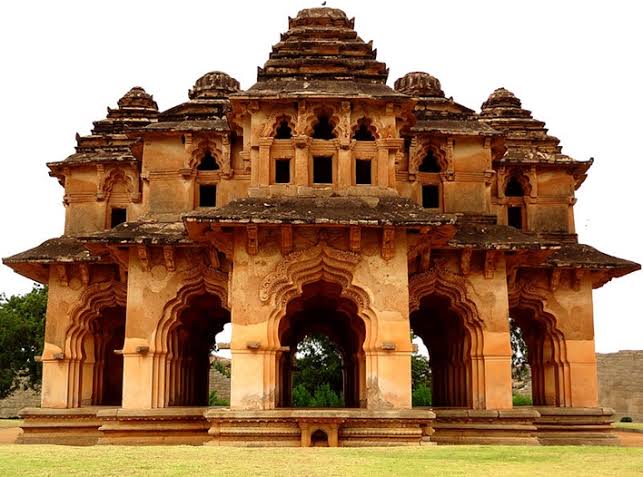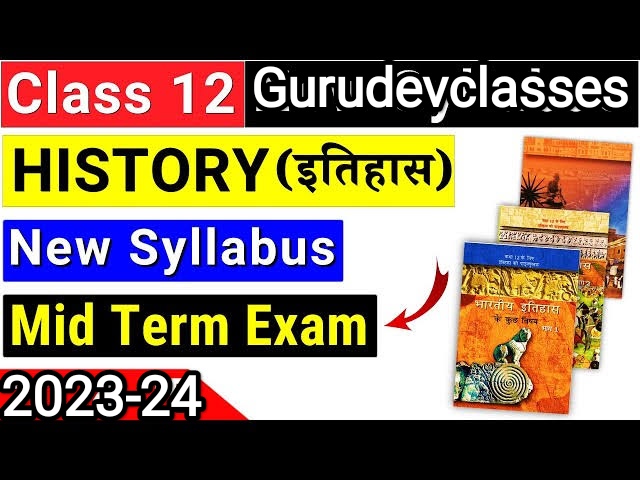Class XII History Mid Term Paper (2023–24).
📘 SECTION–A (Objective Type Questions)
Q1. In which Harappan site have terracotta models of plough been found?
A) Banawali B) Kalibangan
C) shotughai D) Dholavira
👉 Answer: B. Kalibangan (Rajasthan)
✅ Explanation: Archaeologists discovered terracotta models of plough at Kalibangan, indicating agricultural practices. Dholavira was known for water conservation, Banawali for terracotta toys, and Shortughai for lapis lazuli trade.
Q2. Which statement is NOT related to the Kushana dynasty?
👉 Answer: C. They were possibly influenced by the Gupta rulers.
✅ Explanation: Kushanas came earlier (1st–3rd CE). Guptas rose to power much later. So, Kushanas couldn’t have been influenced by Guptas.
Q3. Who wrote the play Mrichchhakatika?
A)Chanakya B)Kalidas C) Banabhutta D) Shudraka
👉 Answer: D. Shudraka
✅ Explanation: Mrichchhakatika (The Little Clay Cart) is a Sanskrit drama attributed to King Shudraka, not to Chanakya, Kalidasa, or Banabhatta.
Q4. Identify the picture.
A) Audiance Hall B) Virupaksha temple
C) Lotas Mahal D) Hajararama Temple

👉 Answer: C. Lotus Mahal
✅ Explanation: The image shows a Vijayanagara monument, the Lotus Mahal in Hampi, built in Indo-Islamic style.
Q5. In which language did Krishnadeva Raya write Amuktamalyada?
A) Tamil B) Telugu C) Malyalam D) Kannada
👉 Answer: B. Telugu
✅ Explanation: Though a Vijayanagara ruler from Karnataka, Krishnadeva Raya composed the famous Telugu work Amuktamalyada, describing the story of Andal.
Q6. Fill in the blanks: In ______ John Marshall announced Indus Valley discovery.
A) 1920 B) 1921 C) 1922 D) 1923
👉 Answer: B. 1922
✅ Explanation: Mohenjodaro was excavated in 1922 by Rakhal Das Banerjee, under John Marshall’s direction.
Q7. Assertion (A) + Reason (R): Rigveda mentions Rudra. Proto-Shiva seal of Harappa matches Rudra.
👉 Answer: C. (A) is true but (R) is false.
✅ Explanation: Rigveda does mention Rudra, but Harappan proto-Shiva seal has no proven direct link with Rudra.
Q8. After Buddha’s death, where was the council held & Tripitaka compiled?
👉 Answer: B. Vesali
✅ Explanation: The Second Buddhist Council was held at Vesali where Tripitaka was compiled.
Q9. Teachings of Buddha reconstructed through which text?
👉 Answer: A. Sutta Pitaka
✅ Explanation: Sutta Pitaka contains Buddha’s discourses and teachings.
Q10. Correct option about Prayaga Prashasti.
👉 Answer: B. Composed by Harishena, court poet of Samudragupta
✅ Explanation: The Allahabad Pillar Inscription (Prayaga Prashasti) was authored by Harishena, glorifying Samudragupta.
Q12. Rulers identified through Metronymics (mother’s name).
👉 Answer: C. Satavahanas
✅ Explanation: Satavahana kings used mother’s names (like Gautamiputra Satakarni).
Q13. Match the columns:
- (i) Capital of Magadha – c. Pataliputra
- (ii) Prakrit name of Rajgir – d. Rajagaha
- (iii) Tamil Nadu, AP, Kerala – b. Tamilakam
- (iv) Land grant to Brahman – a. Agrahara
👉 Correct option: D
Q14. Term “Great” & “Little” traditions coined by?
👉 Answer: A. Robert Redfield
✅ Explanation: He used these terms to differentiate elite (great) and popular (little) traditions.
Q15. Immediate successors of Mauryas who were Brahmanas?
👉 Answer: D. Shungas, Kanvas
Q16. Translation of Patanjali & Euclid’s work?
👉 Answer: B. Al Biruni
Q17. Tamil anthology described as Tamil Veda?
👉 Answer: D. Nalayira Divyaprabandham
Q18. Amaravati & Shah ji Ki-Dheri stupas located?
👉 Answer: C. Peshawar
Q19. When did James Prinsep decipher Brahmi?
👉 Answer: B. 1835 CE
Q20. Traveller description (Tangier, Rihla, Judge of Delhi).
👉 Answer: B. Ibn Battuta
Q21. Inscription at Mandasor (5th CE) mentions?
👉 Answer: D. A guild of silk weavers
📘 SECTION–B (3 Marks Short Answers)
Q22. Sources for Mauryan history
- Literary sources → Megasthenes’ Indica, Arthashastra of Kautilya, Ashokan edicts.
- Archaeological sources → Pillars, stupas, inscriptions.
- Numismatic evidence → Punch-marked coins.
OR
Q22b :Why land grants were recorded in inscriptions?
Answer:
1.Literary accounts – Megasthenes’ Indica provides outsider view; Arthashastra depicts administration and politics.
2. Legal validation – Stone/copperplate records served as permanent legal documents for ownership, reducing disputes.
3.Political propaganda – Displaying generosity and piety (dana) enhanced ruler’s image and continuity of moral duty
Q23. Popular traditions & Buddha sculptures at Sanchi
- Not directly about Buddha’s life, but depict Jataka tales.
- Show scenes from ordinary life, villages, animals, trade.
- Help historians understand popular beliefs and local traditions of that era.
Q24. Sources for reconstructing religious traditions
- Inscriptions and scriptures (e.g., Vedas, Puranas, Jatakas).
- Archaeological remains (temples, stupas, images).
- Accounts of travellers (Xuanzang, Al-Biruni, Ibn Battuta).
Q25. “Notion of saviour not unique to Buddhism”
- Buddhism → belief in Bodhisattvas as saviours.
- Hinduism → concept of avatar (incarnation) of Vishnu like Rama, Krishna.
- Shows continuity of saviour concept across religions.
Q26. Categories of Bhakti tradition
- Saguna Bhakti – devotion with form (worship of Vishnu, Shiva, etc).
- Nirguna Bhakti – devotion without form (Kabir, Nanak).
- Early Bhakti in Tamil Nadu: Alvars (Vishnu devotees) and Nayanars (Shiva devotees).
27A. What elements of the Sati practice attracted the attention of Bernier?
- Voluntary vs. coerced nature – Bernier observed that though some widows may have appeared willing, societal pressure made it coercive.
- Public ceremony – Sati was a public spectacle, sometimes celebrated; Bernier was shocked by its normalized acceptance.
- Belief system – The notion that widow’s self-immolation was noble or spiritually meritorious struck him as extreme and inhuman.
27B. In the context of Indian caste system, Alberuni’s understanding and interpretation was based on the search for parallels in other societies.’ Explain this statement.
- Comparative method – Alberuni noted Indian caste rigidity and sought analogies in Persian, Greek, or Arab societies to understand the system better.
- Objective lens – His cross-cultural comparisons enabled him to analyze caste not solely through Indian texts, but via external reference frameworks.
- Early anthropology – This practice made him among the earliest comparative sociologists writing about India from an outsider’s perspective.
Section C – 8 Marks
28A. What were the main craft production activities of Harappan Civilization? Elucidate variety of materials, techniques, availability of raw materials used in making beads.
- Bead-making centres – Beads manufactured in cities like Chanhudaro, Lothal; specialized clusters.
- Materials – Carnelian, faience, steatite, bone, shell; availability via local & trade routes (e.g., Indus for carnelian, Arabian for shells).
- Techniques – Shaping, drilling with fine copper drills, polishing to glossy finish.
- Craft specialisation – Individual artisans or guild-like shops, use of standardized molds & patterns.
- Other crafts – Metalwork (bronze, copper tools, ornaments), pottery (black-and-red ware), terracotta, seal carving (steatite seals).
- Resource supply – Raw materials sourced from distant regions via trade: lapis from Afghanistan, shells from coastal regions.
- Economic integration – Craft produced items were traded internally and externally (Mesopotamia).
- Artistic standardisation – High uniform quality across sites indicates shared traditions and organized production.
28B. ‘In Harappan civilization, evidences of such structures were found those were probably used for special public purposes.’ Support with examples.
- The Great Bath (Mohenjo-daro) – Large public water tank, possibly for ritual baths or ceremonies, built with watertight bricks.
- Granaries (Harappa) – Massive brick buildings with ventilated upstairs, for storage and administration.
- Assembly halls or citadels – Raised platform areas for administrative gatherings (e.g., at Dholavira).
- Drainage networks – Covered drains along major streets indicate planning for public health.
- Dockyard (Lothal) – Basin-like structure for ships, indicating public infrastructure for trade.
- Standardized bricks – Indicate central control and planning across regions.
- Public granularity – These structures served collective hygienic, ceremonial, administrative and economic functions.
- Interpretation – Such constructions reflect organized state apparatus and collective civic ethos, rather than purely residential architecture.
29A. Mentioning an ideal order of social classification, laid down in Dharmashastra and Dharmasutras, describe rules related to ideal ‘occupation’ of four varnas, and explain what strategies were used by Brahmins to follow these norms.
- Vedic varna model – Brahmins (priests), Kshatriyas (warriors), Vaishyas (traders), Shudras (servants), each assigned hereditary occupational roles.
- Dharmasutras rules – Brahmins conduct rituals, teaching; Kshatriyas rule and protect; Vaishyas trade and agriculture; Shudras serve other three.
- Occupation and purity – Pollution/purity norms restricted inter-varna interactions.
- Strategies by Brahmins:
- Religious legitimization – Framed themselves as divine custodians through sacred texts like Manusmriti.
- Control of education – Literacy in Sanskrit restricted to Brahmins, consolidating social control.
- Performing rituals for elite – Paid heavily for rituals to kings and merchants, reinforcing hierarchy.
- Endogamy and gotra rules – Maintained exclusivity, preventing mixing.
29B. Explain the role of Jajmani system in reinforcing the varna hierarchy.
- Definition – Traditional economic system where each caste performed hereditary service for others in exchange for payment or goods.
- Mutual dependency – Artisans provided goods/services, landowners provided sustenance, reinforcing each caste’s role.
- Reinforcement of hierarchy – Brahmins got ritual services for free, while lower castes served them, emphasizing supremacy.
- Hereditary nature – Occupations passed down generations, limiting social mobility.
- Economic stability – Created stable economic interdependence, but also cemented caste divisions.
- Social control – Reinforced status quo; any deviation was discouraged through social sanction.
30A. Temples of Vijayanagara Empire were developed as religious, social, cultural and economic centres. Evaluate the statement with the help of appropriate logic and examples.
- Religious hubs – Temples (Virupaksha, Vitthala) were primary spaces for worship of Shiva/Vishnu.
- Social nodes – Festivals (e.g., Rathotsava) created community solidarity; temples had kitchen halls (Annadana).
- Cultural stage – Supported music, dance (e.g., nattuvanar), literature patronage, classical art forms.
- Economic engines – Received land grants (agraharas), wealth from merchants, taxes, and donations.
- Markets around temples – Bazaars developed at temple precincts (e.g., Hampi’s bazaar) supporting traders.
- Employment generation – Artisans, priests, dancers, poets affiliated around temple complexes.
- Urban planning – Temples as focal architectural anchors; cities grew around them.
- Political propaganda – Stone inscriptions and architecture displayed dynastic power and religious legitimacy.
30B. ’Who was Colonel Mackenzie? Review his efforts of bringing Hampi’s ruins at light and plotting bazaars, palaces and temples on the map.’
Answer:
- First Surveyor General of India – Initiated systematic mapping and surveys of South Indian antiquities.
- Rediscovery of Hampi – Identified and documented Vijayanagara ruins, previously lost to dense terrain.
- Mapping – Sketched and plotted bazaars, palaces, temples (e.g., Virupaksha, Vittala) on maps.
- Record keeping – Created detailed drawings, inscriptions, topographical data.
- Preservation interest – Though archaeological methods were nascent, his survey raised awareness of heritage.
- Pioneered antiquarian methodology – Combined historical texts with field observation for identification.
- Influencing future work – His work paved way for subsequent archaeologists and historians in Indian heritage.
SECTION–D (Source Based)
Q31.Sudarshan lake
० Dynasty: Shaka ruler Rudradaman. Ruled in Gujarat.
० Achievements: Got lake repaired without imposing tax.
० Other irrigation: Canals, wells, tanks.
Q32. Postal system (Ibn Battuta)
० He belonged to Morocco.
० Postal system: Horse post (Uluq), Foot post (Dawa).
० Foot post was quicker & carried goods like fruits of Khurasan.
Q33. Shankaradeva
० Vaishnavism in Assam.
० Teachings: Bhagavata dharma, naam kirtan, based on Gita & Puranas.
० Suggested paths: Devotion, naam recitation, congregational prayers.
SECTION–E (Map Based)
Locate on Political Map of India:
० Vijayanagara – Hampi (Karnataka)
० Girnar – Gujarat (Ashokan Major Rock Edict site)
० Sanchi – Madhya Pradesh (Buddhist site)







